Selling your services online is a great way to improve revenue while reducing operation costs. However, it must be done right if it’s going to provide you with such terrific benefits.
In this article, we’ll share six tips and tricks that’ll help you attract more leads and make the offers on your website irresistible to them.
Package Your Services Like a Product
Unlike most services, products have standardized pricing and features, making it easy for customers to buy them online without talking to a sales rep.
Service-based businesses can provide this same convenience to customers by offering a service package and outlining its price and features on the services page of their website.
Here’s an example of what we mean:
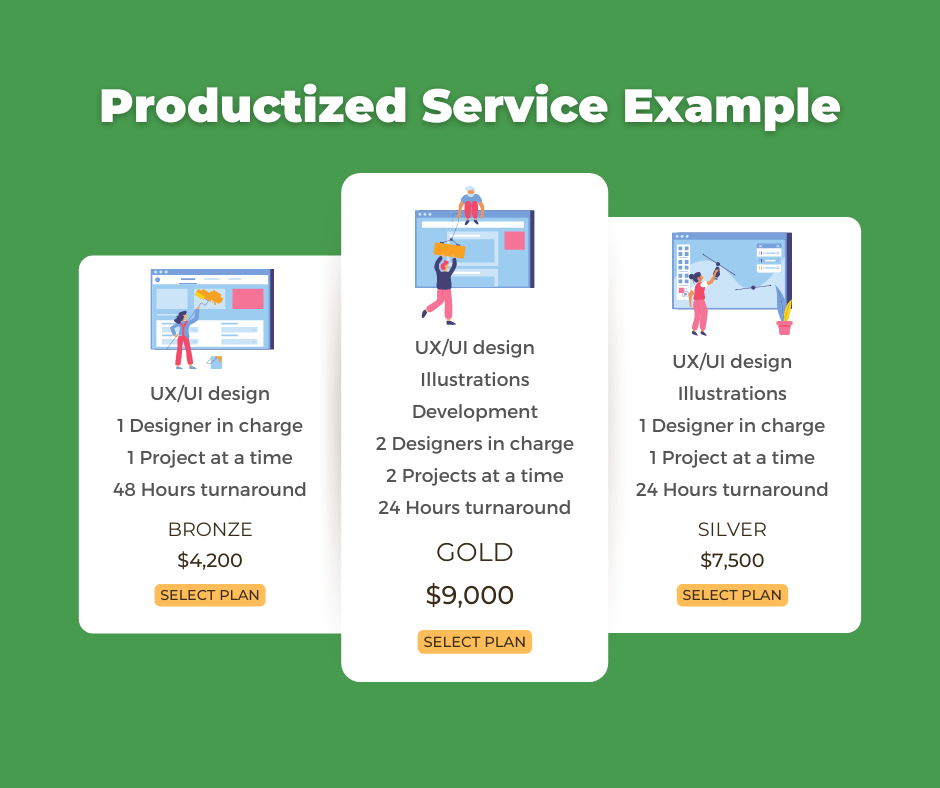
Source: FlashHub
This is a process known as productization, and it can really help you increase your sales velocity and website conversion rate.
To illustrate productization in practice, take a look at what the Composely marketing agency does on the pricing page of their website.
While they do still offer a custom plan (called Choice), they also have two standardized service bundles available that start at $999 per month:
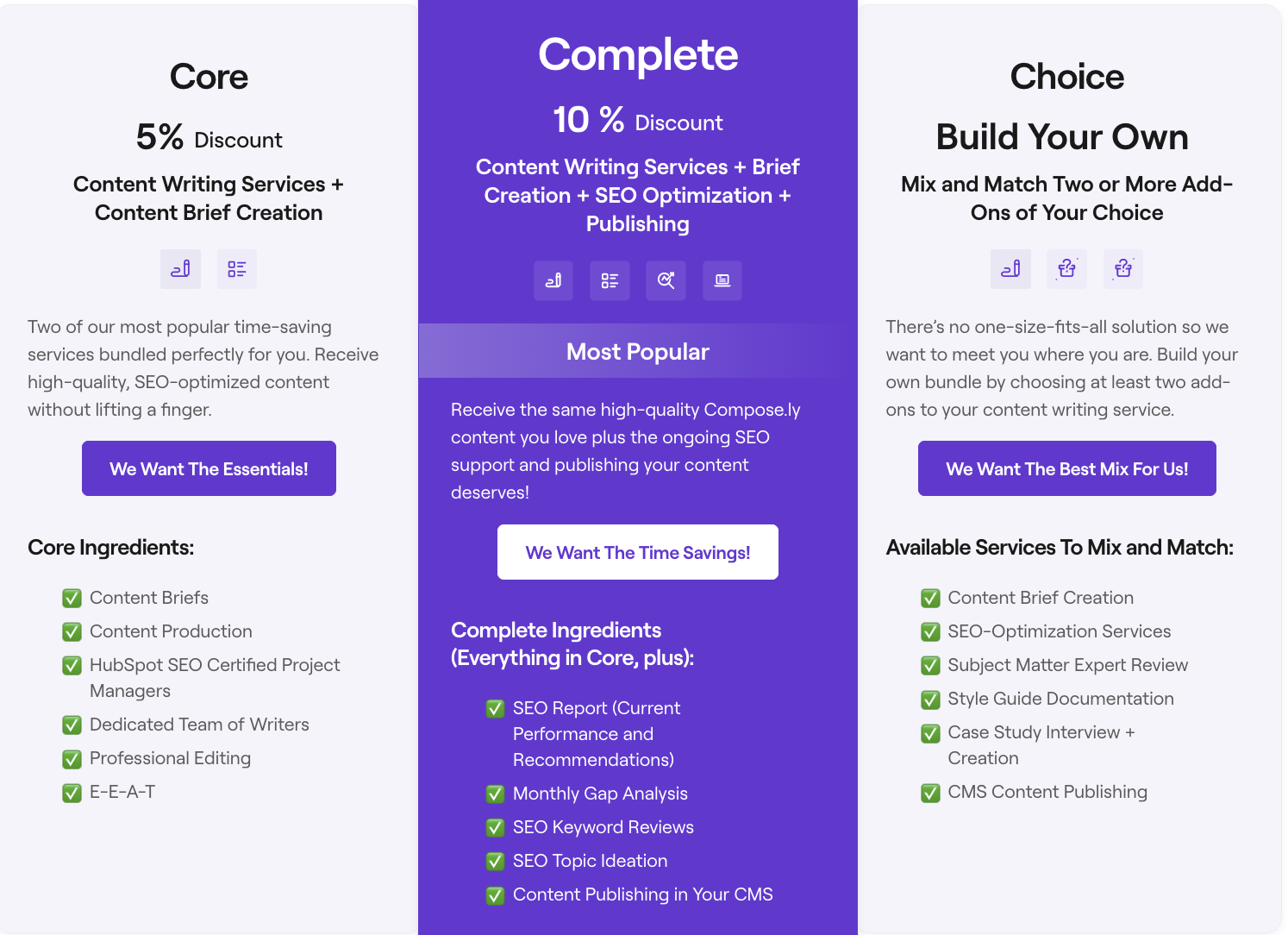
Source: Composely
Of course, a service that costs this much is still probably going to require a phone call between the buyer and the seller.
Nevertheless, removing the sales call step is rarely the main purpose of productizing a service.
It’s a nice perk when it happens, but there are other reasons for outlining standardized pricing and features for your services on your website.
For starters, customers will be able to immediately get answers about what your service includes. They won’t have to fill out a contact form, then wait for a response.
By the time they do fill out a contact form, they’ll be more knowledgeable about what they want to buy. This means the sales call will be more productive.
Offering your service like a product also drastically improves the customer experience, which means more customers will buy your solution on the website or after a sales call.
They’ll appreciate the transparency and clarity about your offering.
In essence, by studying your services page, leads will either sell or disqualify themselves. And this makes the sales team’s job a whole lot easier.
Position Yourself as the Expert
Positioning yourself as an expert in your field will make your prospects trust you and want to work with you.
Aside from putting testimonials on your site, there are numerous ways to cultivate this aura of expertise when selling your services online.
One popular method is to start a blog or YouTube channel where you post educational content that helps your target audience solve their problems.
For example, GMAT Ninja, a test prep tutoring service, has a blog answering common questions test-takers have:

Source: GMAT Ninja
Another cost-effective way to build credibility as an expert is to get on social media and share your thoughts about your industry.
For example, an owner of a digital ad agency might regularly post on LinkedIn since that’s where potential customers reside.
They might give unique advice, discuss trends in the digital ads space, and share their experiences and learnings. They could even promote blog posts they’ve written.
Over time people will start to think of them as the go-to experts on all things concerning digital ads, and some of those people will end up becoming customers.
For instance, Erica Schneider posts about blog editing and SEO strategy to promote herself and her brand, Grizzle, as experts in the B2B content marketing space:
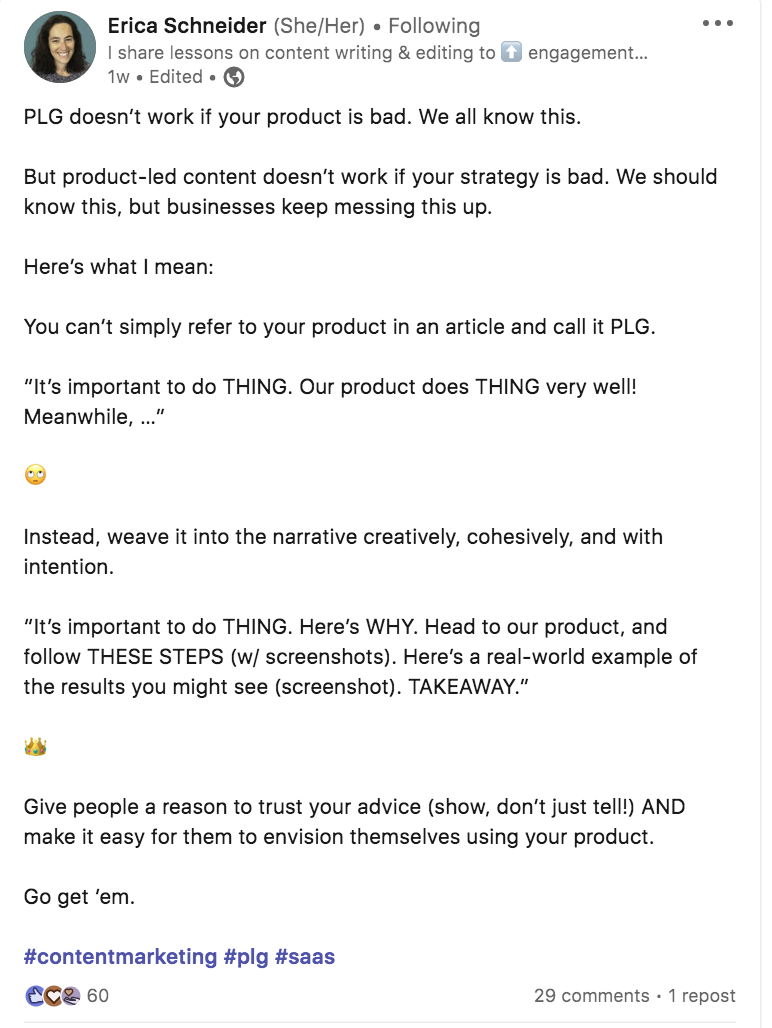
Source: Erika Schneider on LinkedIn
Another way to come across as an expert is staying abreast of the latest trends and news in your space, then sharing it with clients during sales meetings or phone calls.
It’s worth noting that the first part of positioning yourself as an expert is actually becoming an expert.
The more you know about your line of work, the more naturally nuanced and insightful advice will flow from your lips or keyboard.
You’ll also exude confidence in conversation that’s so sincere that even when you’re just speaking about something basic, your clients will feel like they’re talking to a master.
So, aside from marketing yourself as an expert, take time each day to learn.
Read relevant books. Listen to industry podcasts. Draw lessons from your past experiences with helping clients. Follow the news.
Then, share your learnings and commentary on your website, during phone calls with leads, and across social media.
Guide Leads Through Your Sales Funnel
Leads look to you for guidance on how to proceed to the next stage of the buying process.
When they’re ready to move forward, they want to be told what information to consume next, what forms to fill out, how to select their package, and where and how to pay.
In previous times, it was a sales rep who walked them through this process. But now, service-based businesses can automate it with the right software platform.
Consider using payment processing software with automated onboarding to guide leads on your website through the steps of the buying process.
Our solution, Regpack, allows you to display your service packages on your site and collect online customer information and payments through easy-to-build embedded online forms.
For example, customers who come to Yellowstone Forever in search of a fun field seminar can quickly find the right one for them thanks to the online store with filtering capabilities:

Source: Yellowstone Forever
Then, after reading about and selecting the service they want to buy, they’re guided through the rest of the sales funnel towards a purchase.
First, leads are prompted to select the number of tickets they want:
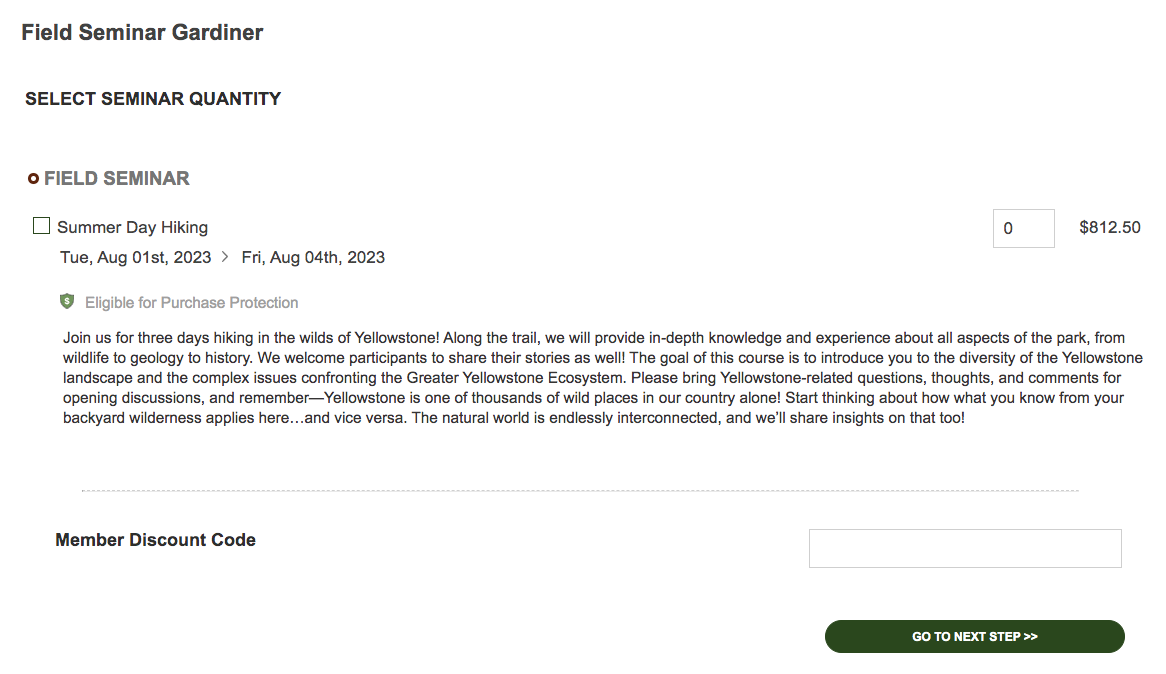
Source: Yellowstone Forever
Then they’re asked to fill out an online registration form with personal information that the service provider needs in order to give them a safe and fun experience.
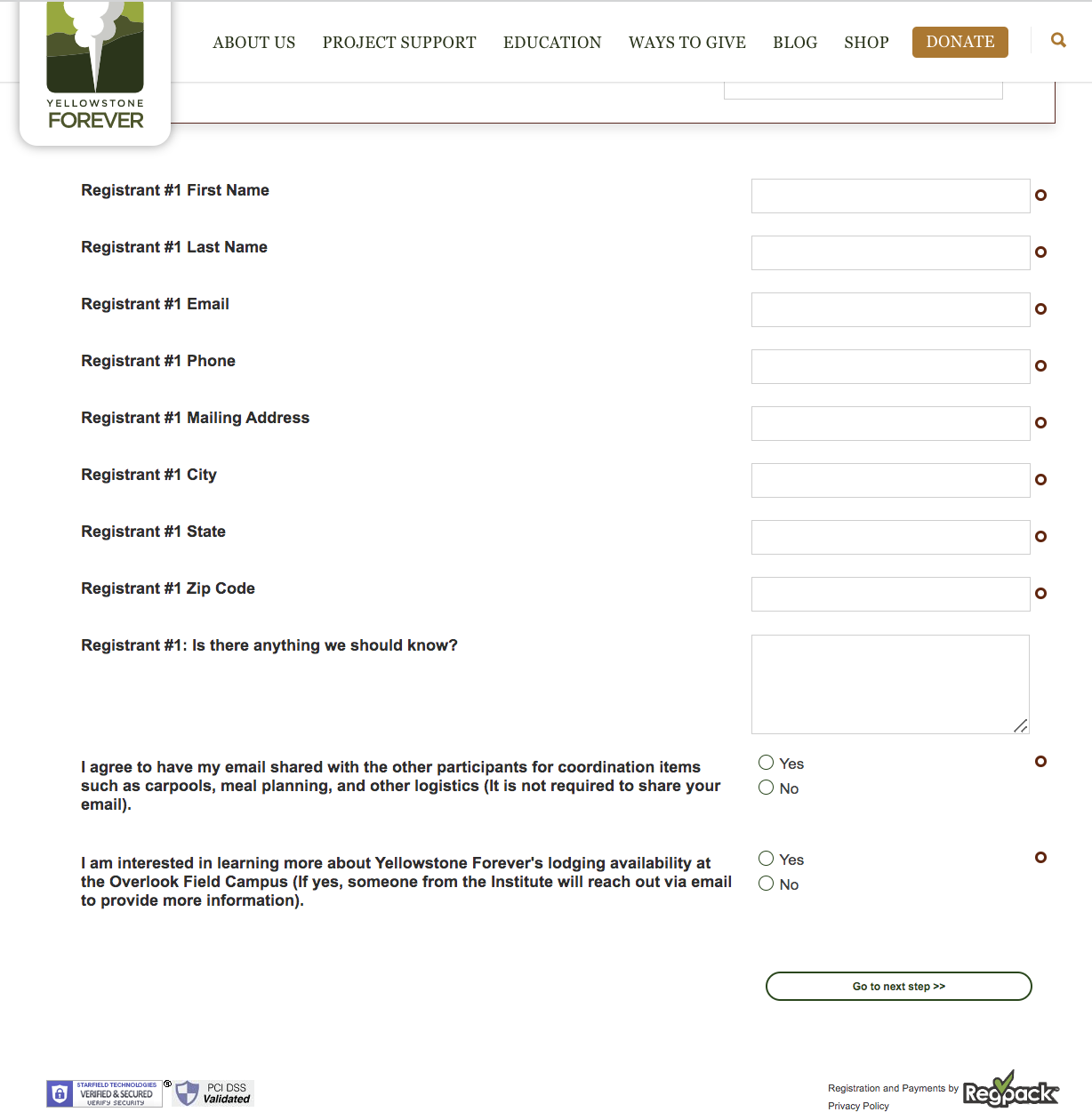
Source: Yellowstone Forever
Aside from contact information, the online form also asks leads questions about their age, height, emergency contacts, and health.
Finally, customers can pay using multiple payment methods through a secure online payment form, which you can also quickly build in Regpack:
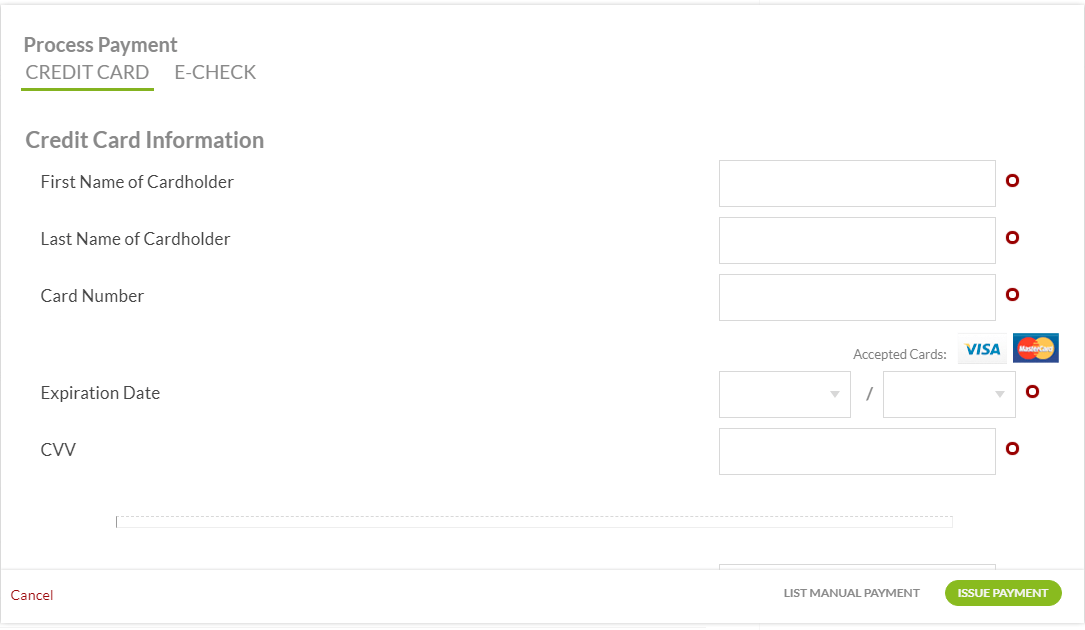
Source: Regpack
By guiding your leads through the funnel with software, you simplify and shorten that period between initial interest and final purchase, allowing you to raise conversion rates on your site and hire fewer sales reps.
Network With Other Service Businesses
When a service business has to say no to a new project or client, they want to avoid upsetting the buyer.
So what do they do? They recommend another business.
For example, if a freelance writer’s current client came to them with a new project that was out of their zone of expertise and therefore not worth their time, the freelancer might recommend another writer in their network who’s a better fit.
This keeps the client happy and helps the freelancer get into the good graces of the person they’re giving a free lead to. Down the line, the recipient might return the favor.
Networking with businesses in your industry also opens up opportunities for collaboration.
For example, a web developer might find that they need a copywriter’s help to complete their project. If they know one, they’ll reach out to them, or ask another developer from their own network of contacts to recommend someone.
Further, you could also network with social media influencers in your industry who can promote your services to their extensive network.
Or you could partner with a complementary service and produce a video or webinar with them to give them exposure to your audience, and then ask them to do the same for you in return.
In sum, the more service providers you know, the easier it becomes to find new clients. Relationships are a great engine for word-of-mouth referrals and brand exposure.
Utilize Multiple Marketing Channels
Are you familiar with the rule of 7? It’s a marketing principle that says customers need to see your brand at least seven times before they’re ready to make a purchase.
Since your audience likely uses multiple online platforms, from email to social media, it’s a good idea to try to be highly visible on each.
Ideally, you want them to see your brand on Google search results, then on Facebook or Twitter, then in their text messages.
Below are five marketing channels you can use to make sure you surpass that rule of 7 with each potential buyer:
| SEO content marketing | Start a blog and publish educational content that answers questions your target audience commonly asks on Google. Make sure the content is related to your service in some way. |
| Paid ads | Pay to run advertisements on Google or social media sites to promote your services. |
| Social media marketing | Start an account for your brand and start building a reputation as an expert on the social networks where your target audience hangs out. |
| Email marketing | Create automated email campaigns that educate your leads about a problem they’d like to solve. Every few emails, drop a mention of how your service can help. |
| Text message marketing | Promote discounts and sales through text messaging so that you can reach people through their phones. Most people have notifications turned on for texts, so this is an easy way to win attention. |
Having a diverse marketing plan will also ensure that you’re not missing a segment of your audience.
For example, there might be some leads who never use social media but are obsessed with email, and vice versa.
By covering both channels, you ensure you engage with both types of leads.
If you need help managing your many marketing initiatives, consider using an omnichannel marketing automation tool like ActiveCampaign.
Use Retargeting to Increase Conversions
Retargeting is when you advertise your service on various channels to leads who have already visited your website but left without buying.
This is an extremely cost-effective marketing strategy because it focuses on leads who have already expressed an interest in your services.
And it’s great for increasing conversions because it keeps your brand fresh in the minds of these leads.
For customers, seeing a retargeting ad is sort of like receiving a tailored follow-up email after attending a web demo.
It calls them back to explore more and reminds them why they were interested in the first place.
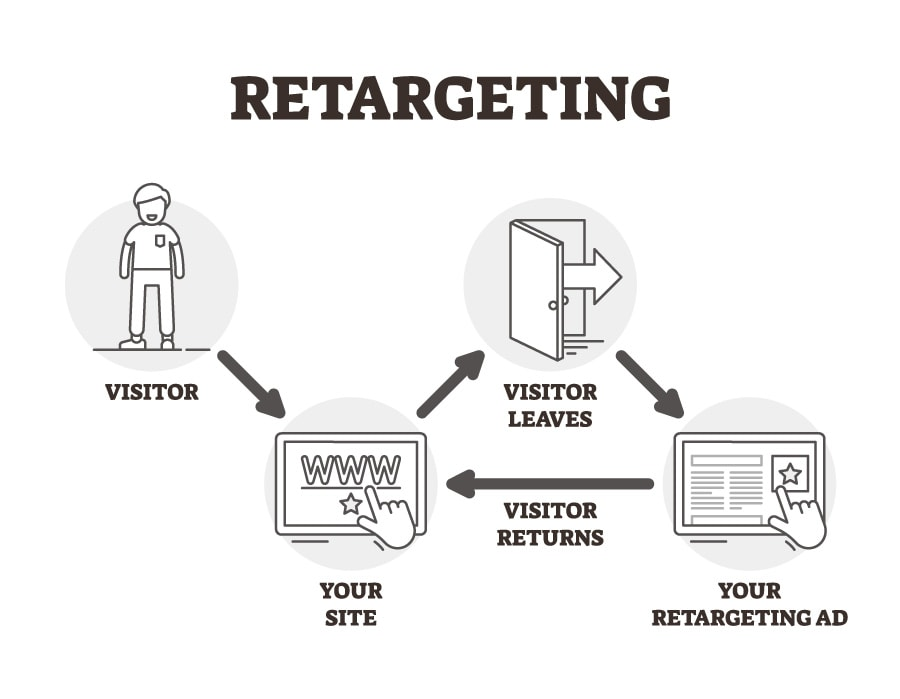
Source: Unbounce
These post-visit touches are crucial for conversions, especially when 97% of customers don’t make their purchase on their first visit to an ecommerce store.
When retargeting is done right, the leads who visited your site will regularly see ads for your service on the other websites and social media platforms they visit.
For instance, if someone checked out Adobe recently, they might get this ad on the sidebar while reading a Forbes article:

Source: Forbes
With the right retargeting tool, you can get hyper-specific about what types of ads they see. You can make sure that it relates to the exact pages they visited on your site.
For example, if a lead visited your service website’s page for service A but not for services B or C, the ads that the lead sees would focus on service A.
Adroll, a popular retargeting solution, helps you create retargeting campaigns that are tailored to each customer’s previous experiences with your brand, such as which pages they’ve visited and when they last abandoned a cart.
Selling services online is often a long game. It requires consistent lead education and, to be honest, some slight nudging to get leads across the finish line.
Retargeting campaigns fit perfectly with this sales philosophy of gradual lead nurturing.
Conclusion
If you follow these tips and tricks, you should see an increase in your conversion rates and client satisfaction.
After all, one of the things all these tips have in common is how they make the buying process more convenient for the leads who visit your service website.
Now that you know the do’s, it’s probably a good idea to review the don’ts. Check out this article on the biggest mistakes businesses make selling their services online so that you can avoid them.



















